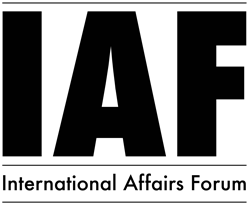| Fri. July 18, 2025 |
 |
|
||
|
||||
| ||||

Given the dysfunctional nature of most public services in the country, there is an urgency to adopt a modernization agenda for capacity building to deliver required outcomes. It is important to adopt a holistic approach for the modernization task. The plan will be spearheaded by the Modernization Unit created for the purpose in the Prime Minister office. A detailed Action Plan will be devised for each state sector (such as education health, commerce, communications, agriculture) both at the federal level, and the provincial levels. A very simplified transformation process would basically include three stages, namely:
- Action Plan formulation
- Sector Tasks and Implementation
- Outcomes and Feedback mechanisms.
Initially, a preliminary examination of the environment and resource availability of each sector shall be undertaken immediately. The environment includes an examination of both legal and political factors affecting the performance of the sector. The resource availability includes examination of all fiscal constraints in the area. This is required to get a general idea of the sectors requirements, priorities, and the organizational structures of the state agencies or departments. A preliminary examination of the workforce and capacity of these agencies or departments is required. Such knowledge is required to find whether the state agencies or departments are performing effectively and efficiently. It will help in identifying areas of performance that have become problematic, if any. Such a scrutiny will provide a clearer picture of the sector required for the formulation of a workable modernization plan.
Meanwhile, the Modernization Unit will carry out a simultaneous exercise to determine qualitative and quantitative indicators to gauge performance of the agencies and departments of the sector.It is necessary that the task be completed in two months. After the examination of the initial report is complete, a detailed strategy will be devised for each sector. Comprehensive action plans will be prepared in the third month.
The second phase includes the formulation of detailed individual and group tasks in accordance to the agreed action plans. The time for the implementation of the action plan can stretch from a year to three years, depending upon the strategy and sector. Therefore, action plans will be formulated on one, two, and three-year formats.
The third phase relates to the feedback on the outcomes of the Action Plans in the second phase. It provides the feedback to the Prime Minister on the success or failures of these plans. A separate Monitoring and Evaluation group will be created for the purpose in accordance with a framework given in the Action Plan itself. It will include agreed upon performance indicators and targets for each program. For example, performance indicators of the FBR may include, both quantitative and qualitative indicators, such as:
Quantitative
- Number of registered taxpayers by year
- Number of large tax payers by year
- Amount of tax collected and tax type by year
- Amount of taxes in arrears by year
- Amount of taxes refunded by year
- Number of employees in different sections or regions by year
Qualitative
- Public perception of the bureau’s performance by year
- Effectiveness of the employment of technology
- Integrating various tax data sets in the bureau.
- Employment of IT for individual income tax capacity assessment.
- Overall successful use of technology for enhancing bureau’s performance
- Overall, assessment of corrupt practices hampering the performance of the bureau.
- Assessment of organizational structure and weaknesses of the bureau.
- Morale of employees and self-image of the bureau over the years.
Above is an incomplete scheme based on common sense and meant to make a point only.
Reporting Mechanisms
An annual report will be prepared for each sector. The scrutiny of the departments or agencies will be carried out by a third party, preferably donor agencies. Required changes shall be incorporated in subsequent year in the concerned action plans, as per the recommendations of these reports.
The Function of Task Forces
This is essentially a three-tier design. Each sector will be assigned three task forces: federal, provincial and district. They will be headed by the minister or district head. Each Task force will be responsible for the implementation of sector plans. The Task Force will provide oversight of the sector’s process. Each Task Force will consist of 15 members which will include government officials and outside experts.
The primary function of the Task Force shall be to:
- Approve the Action plan
- Oversee of the implementation of the sector strategy
- Deliberate on policy issues that affect the implementation of the plan and approve remedial measures.
- Review the strategic direction of the plan in detail after six months.
- Undertake the annual review of the plan with the assistance of a third party reviewers.
- Review the feedback on the performance of the department or agency and approve implementation of the recommendations.
- Follow up on the implementation of recommendations, if any
- Carry out oversight of the Provincial Task Force
- Undertake joint resource mobilization
The Provincial task forces are a duplication of the federal task force. The Provincial Task Force shall oversee the work of next tier of the District Task Force.
The entire effort will be backed up by a thinktank working for the Prime Minister office.
The greatest urgency is to formulate a Digital -Pakistan strategy for a revamped and robust IT ministry, which is direly needed. The application of modern technology is essential to integrate the work of the entire government of Pakistan, both at the federal and provincial levels. An urgent effort needs to be made to modernize the state’s IT infrastructure. The present structure is inadequate to meet the future requirements of government of Pakistan. A reputed global company will be given a five-year contract for this purpose.
The successful planning and implementation efforts will yield dividends in two years, or so.
Dr. Sohail Mahmood is an Independent Political Analyst based in Chapel Hill NC.
| Comments in Chronological order (0 total comments) | |
| Report Abuse |
| Contact Us | About Us | Donate | Terms & Conditions |
|
All Rights Reserved. Copyright 2002 - 2025